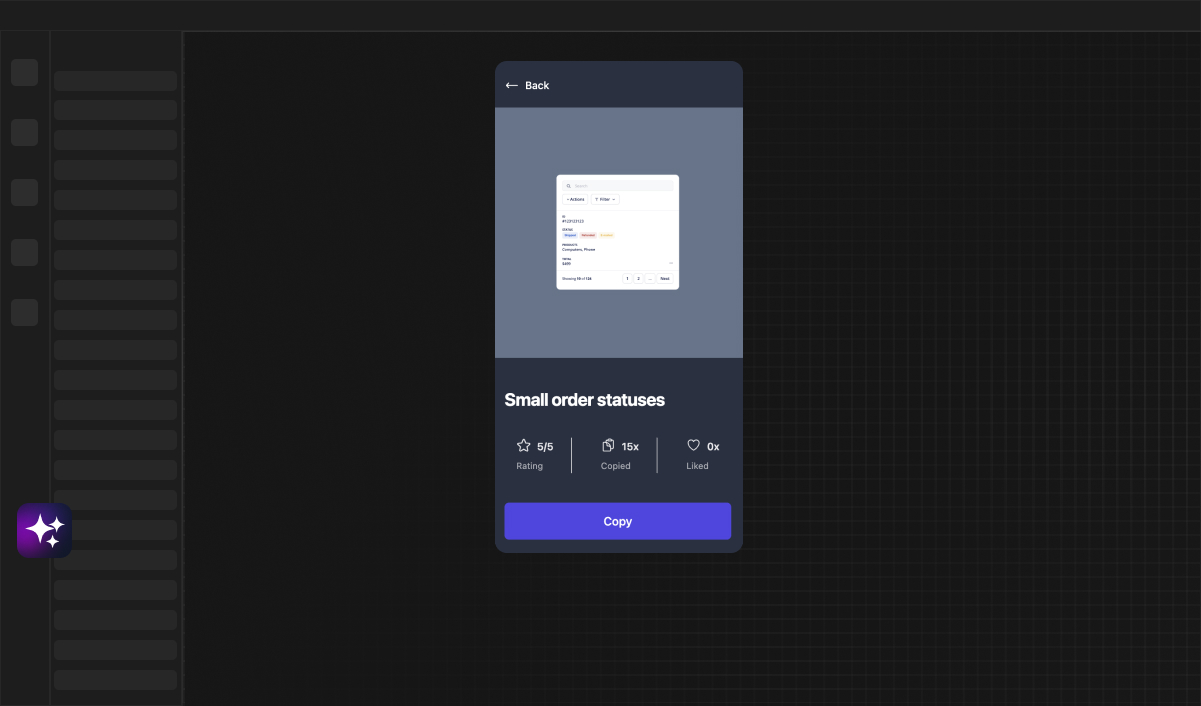
Web Developer
API Integration in Bubble: A Beginner's Tutorial
Dive into the world of Bubble and learn the basics of API integration with this beginner-friendly tutorial. Discover how to connect various services and enhance your applications using APIs in a no-code environment with Bubble.
Introduction to API Integration in Bubble
Welcome to the world of no-code development, where the power to create complex web applications is at your fingertips without writing a single line of code. One of the key components of creating dynamic, data-driven applications is API integration. In Bubble, a leading no-code development platform, integrating APIs can expand the functionality of your apps tremendously. In this blog post, we'll embark on a journey to understand the basics and provide you with a hands-on tutorial for API integration in Bubble. APIs, or Application Programming Interfaces, are bridges that allow different software systems to communicate with each other. In the context of Bubble, APIs enable your applications to interact with external services, fetch data, send information, and much more. Whether you're a beginner or just brushing up on your skills, this tutorial is designed to help you grasp the essentials and get started with API integration in Bubble.
Understanding APIs
The Role of APIs in Bubble
APIs are the unsung heroes of the digital world, enabling the seamless interaction between different platforms and services. In Bubble, APIs play a pivotal role in empowering your applications to leverage external data and functionality. Imagine being able to pull live weather data, send automated emails, or process payments, all within your Bubble app—APIs make these features possible.
Prerequisites for API Integration in Bubble
Before diving into API integration, it's essential to understand some prerequisites. You'll need a basic knowledge of how web services communicate and some familiarity with JSON, which is often used to structure data in API requests and responses. Don't worry if you're not an expert; we'll cover the fundamentals as we go along.
Setting Up Your Environment
Signing Up for a Bubble Account
To get started, you'll need to create a free account on Bubble. Head over to Bubble's website and sign up. Once you're in, you'll be greeted with a dashboard that's your launchpad to building apps.
Familiarizing Yourself with the Bubble Interface
Bubble boasts an intuitive interface that eases the learning curve for beginners. Spend some time getting to know the layout, where you can design the user interface, create workflows, and manage your app's data.
Necessary Tools for API Integration
For API integration, you'll primarily work with Bubble's API Connector. This powerful tool is your gateway to connecting with external APIs. Make sure to enable the API Connector plugin in your app before proceeding.
Introduction to the Bubble API Connector
What is the Bubble API Connector?
The Bubble API Connector is a plugin that allows your app to send and receive data from outside sources. It's a versatile tool that lets you create API connections with minimal hassle.
Key Features of the API Connector
The API Connector comes packed with features that enable you to customize API requests to suit your needs. It supports various authentication methods, handles different HTTP methods, and allows you to define API call parameters.
When to Use the API Connector
Use the API Connector whenever you need to extend your app's capabilities beyond what Bubble offers out of the box. Whether it's connecting to a third-party service or accessing a custom-built API, the API Connector is your go-to solution.
Understanding API Basics
API Endpoints
Every API interaction revolves around endpoints—URLs that denote specific functions or resources within an API. Identifying the correct endpoint is crucial when configuring an API call in Bubble.
HTTP Methods: GET, POST, PUT, DELETE
APIs rely on standard HTTP methods to perform actions. GET retrieves data, POST sends new data, PUT updates existing data, and DELETE removes data. Knowing which method to use is essential for successful API integration.
API Authentication Methods
Securing API interactions is paramount, and authentication ensures that only authorized users access an API. Common authentication methods include API keys, OAuth, and Basic Auth. Bubble's API Connector supports these methods, allowing you to securely integrate APIs.
Parameters and Payloads
When making API calls, you often need to include parameters or payloads that provide additional information required by the API. Parameters are typically part of the URL, while payloads are sent in the body of POST or PUT requests.
A Step-by-Step Guide to Integrating APIs in Bubble
Identifying the API You Want to Connect
Start by selecting the API you want to integrate. Read the API documentation thoroughly to understand its capabilities and requirements.
Configuring the API Connector Plugin
Adding a New API in the API Connector
Navigate to the Plugins section of your Bubble editor and add a new API using the API Connector. Give it a name and fill in the necessary configuration details based on the API's documentation.
Setting Up Authentication
Choose the appropriate authentication method for your API and provide the necessary credentials. This can include API keys, tokens, or client ID and secret pairs, depending on the API.
Making Your First API Call
Setting Up the API Call Parameters
Define the parameters for your API call, ensuring they match the structure expected by the API. Include any required headers and body content.
Testing the API Call
Use the built-in testing feature in the API Connector to send a test request. Analyze the response to ensure it's as expected and make adjustments if needed.
Handling API Responses
Once you get a successful response, you can use Bubble's workflow system to process the data and display it within your app or trigger other actions.
Debugging API Calls
Common Issues and How to Solve Them
API integration can come with its own set of challenges. You might encounter issues with authentication, incorrect endpoints, or malformed requests. The key is to check the error messages carefully and refer back to the API documentation for guidance.
Using Bubble’s Debugger
Bubble’s robust debugger tool can help you inspect workflows and API calls in real time. Use it to step through your application's logic and identify where things might be going wrong.
Logging and Tracking API Requests
Keeping a log of API requests and responses can be invaluable for debugging and monitoring. Bubble lets you track these interactions, which can be crucial for resolving issues and ensuring your API integrations run smoothly.
Best Practices for API Integration in Bubble
Ensuring API Security
When integrating APIs, always prioritize security. Store API keys and sensitive data securely within Bubble and limit their exposure. Use secure, authenticated endpoints whenever possible.
Optimizing API Calls for Performance
API calls can add latency to your app. Optimize performance by making calls only when necessary, caching responses, and being mindful of rate limits imposed by the API provider.
Managing API Keys and Sensitive Data
Keep your API keys and other sensitive information out of your app’s front-end logic. Bubble provides ways to manage these securely, so leverage those tools to protect your data.
Advanced API Integration Techniques
Working with Complex Data Structures
Some APIs return complex data structures that can be challenging to parse. Bubble allows you to work with these structures, transforming and storing data as needed for your app.
Pagination and Handling Large Data Sets
APIs often implement pagination to manage large sets of data. Learn how to navigate through paginated responses to ensure your app can handle and display data effectively.
Using Webhooks for Real-time Updates
Webhooks provide a way for apps to receive real-time notifications from APIs. Bubble can be configured to listen for these webhook events and react accordingly, providing up-to-the-minute updates within your app.
Real-life Examples of API Integration in Bubble
Integrating a Payment Gateway
One common use case for API integration is adding payment processing to your app. Services like Stripe or PayPal offer APIs that can be seamlessly integrated using Bubble, providing a smooth checkout experience for your users.
Pulling Data from External Data Sources
Whether it's stock prices, weather forecasts, or social media content, APIs can bring a wealth of external data into your Bubble app. This enhances your app's value by providing users with fresh, relevant content.
Automating Workflows with Third-Party APIs
Streamline your operations by automating workflows with APIs. From sending emails via SendGrid to managing tasks in Trello, integrating third-party services can significantly increase your app's efficiency.
Conclusion
Recap of Key Points
We've covered the essentials of API integration in Bubble, from understanding APIs and setting up your environment to making actual API calls and best practices. Remember that like any skill, proficiency with API integration comes with practice and experimentation.
Encouragement to Experiment with API Integrations
Don't be afraid to try integrating different APIs and exploring their functionalities. Each API brings new opportunities to learn and improve.
Resources for Further Learning
Continue your learning journey by diving into Bubble's extensive documentation, joining community forums, and exploring online courses. With persistence and creativity, you'll soon be crafting innovative apps with APIs in Bubble. By mastering API integration in Bubble, you unlock a new realm of possibilities for your applications. Embrace the process, and watch your no-code projects reach new heights!



